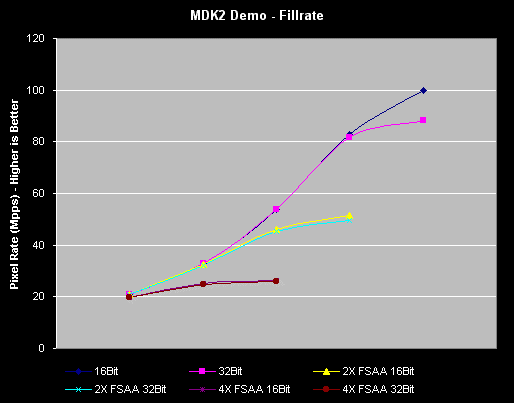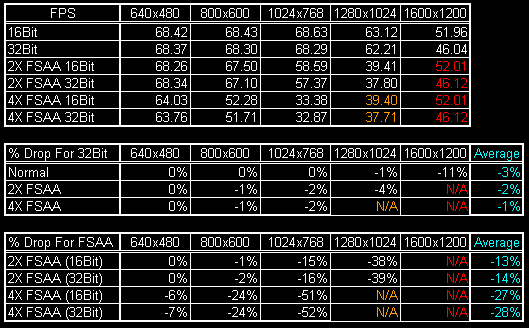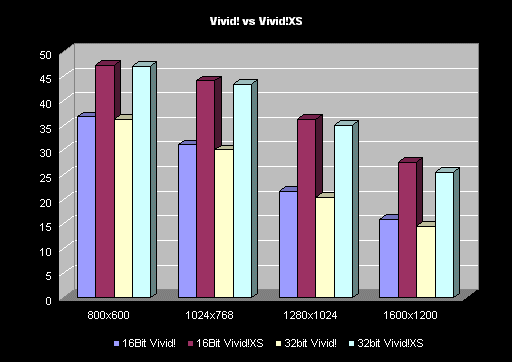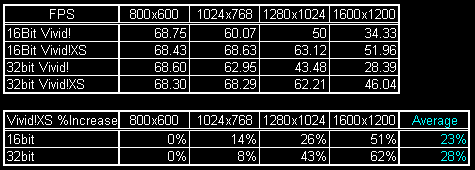MDK2 - Demo


The first thing we notice here is that, even with software T&L, on this system MDK2 is very CPU limited, and Vivid!XS KYROII has fillrate in abundance; as such fillrate only really begins to show a drop off 1280x1024. The performance difference between 16bit and 32bit graphics is negligible, up until we start to get in the very high-resolution range.
The fillrate boost of KYROII gives us that 'stay of execution' in the low-resolution FSAA modes, which was largely absent from the original KYRO; because this system is geometry limited we have fillrate to spare at low resolutions. Larger performance drops are noticed at 1024x768 and above. Another thing to note is that despite 1600x1200 and 800x600 @4XFSAA are drawing the same number of pixels, because the frame buffer requirements in the FSAA mode we see a far less of a performance hit in 32bit with 800x600 @4XFSAA.
We can also see that, as with the original KYRO, FSAA modes are being disabled above 1024x768. However, KYRO just used to disable FSAA completely, but now KRYOII drops down levels - i.e. 4XFSAA will become 2XFSAA at 1280x1024 and disabled completely at 1600x1200. The newer drivers will not allow the render target to have a horizontal resolution above 2048 pixels.


From the comparison between the Vivid! And Vivid!XS we can see that, as you'd expect when the system is geometry limited, we get no gain in performance at the lower resolutions; however as the resolutions increase, so does the gap widen between the two cards. The KYROII Vivid!XS has 52% extra fillrate over Vivid!, which exactly the margin of increase in 1600x1200x16, however we can see that the difference between the two is even furthered when increasing the colour depth to 32bit.
If we compare back to the MDK2 benchmarks in the Vivid! review we can see that some slight gains have been made even in the last two months.
